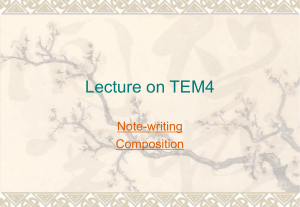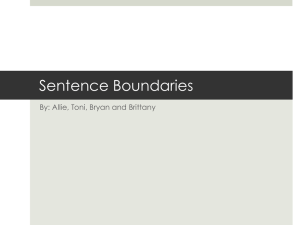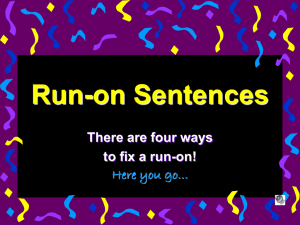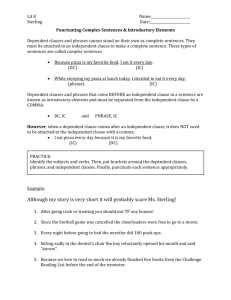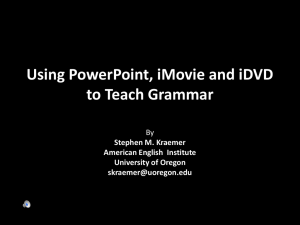What is a run-on sentence, and how
advertisement
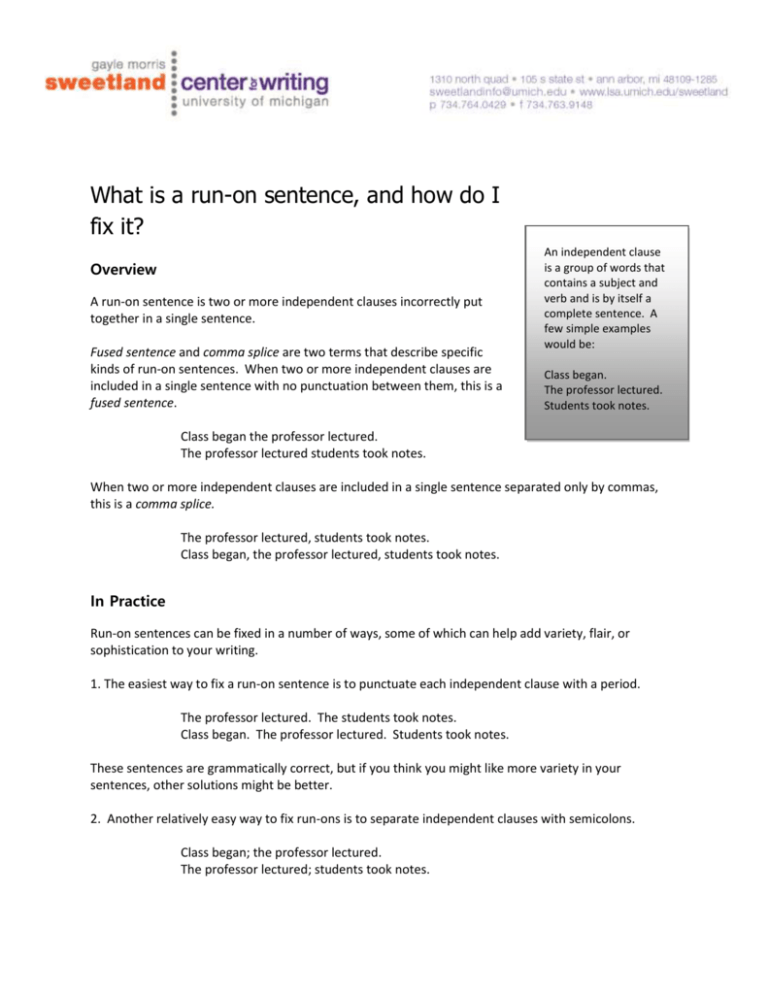
What is a run-on sentence, and how do I fix it? Overview A run-on sentence is two or more independent clauses incorrectly put together in a single sentence. Fused sentence and comma splice are two terms that describe specific kinds of run-on sentences. When two or more independent clauses are included in a single sentence with no punctuation between them, this is a fused sentence. An independent clause is a group of words that contains a subject and verb and is by itself a complete sentence. A few simple examples would be: Class began. The professor lectured. Students took notes. Class began the professor lectured. The professor lectured students took notes. When two or more independent clauses are included in a single sentence separated only by commas, this is a comma splice. The professor lectured, students took notes. Class began, the professor lectured, students took notes. In Practice Run-on sentences can be fixed in a number of ways, some of which can help add variety, flair, or sophistication to your writing. 1. The easiest way to fix a run-on sentence is to punctuate each independent clause with a period. The professor lectured. The students took notes. Class began. The professor lectured. Students took notes. These sentences are grammatically correct, but if you think you might like more variety in your sentences, other solutions might be better. 2. Another relatively easy way to fix run-ons is to separate independent clauses with semicolons. Class began; the professor lectured. The professor lectured; students took notes. The semicolon is a good solution if you have two independent clauses in your run-on sentence. If you have three independent clauses, inserting two semi-colons is technically correct, but may look awkward to readers. Class began; the professor lectured; students took notes. There are other, better options for repairing a run-on sentence with three independent clauses. 3. You can also fix a run-on using one or more commas and one of the following coordinating conjunctions: and, but, so, or, nor, for. Class began, and the professor lectured. The professor lectured, so the students took notes. In these examples, two independent clauses are being joined, and one comma before the conjunction is all that is necessary. However, to join three independent clauses, insert a comma after the first two. Class began, the professor lectured, and students took notes. This is often a very effective way to repair a run-on with three independent clauses. 4. The most sophisticated way to fix a run-on is to subordinate one of the independent clauses. When you subordinate a clause, you change the wording so that it is a dependent rather than independent clause. When class began the professor lectured. The professor lectured while the students took notes. Adding “when” and “while” to what had formerly been independent clauses made them dependent clauses that could be joined to an independent clause with no punctuation. Sometimes, when you subordinate a clause, you may need a comma. 5. Any of the solutions above are great ways to repair a run-on. Once you are familiar with them, you can use them together to add even more variety to your writing. The following sentence uses solutions 1 and 3: Class began. The professor lectured, and students took notes. This sentence uses solutions 1 and 4: When class began, the professor lectured. Students took notes. This one uses solutions 2 and 4: When class began, the professor lectured; students took notes. Exercises Where it is necessary, revise these sentences to eliminate run-ons. 1. Scholars argue about the veracity of this claim this paper will defend it. 2. The experiment was a success, my lab group and I were pleased with the results. 3. Historians have one view of this evidence, while religious authorities have a different view. 4. My research resulted in three useful articles, I will use them as evidence for my thesis. 5. This method has some advantages other methods are less promising.

